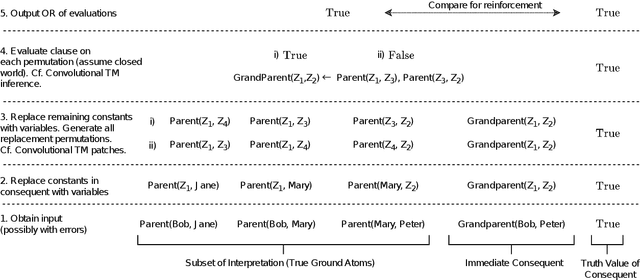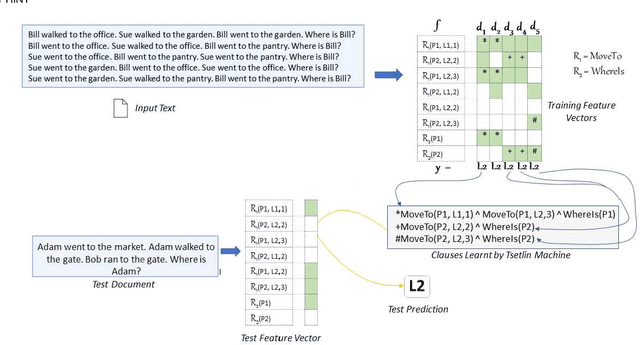Vladimir I. Zadorozhny
A Methodology for Transparent Logic-Based Classification Using a Multi-Task Convolutional Tsetlin Machine
Oct 02, 2025Abstract:The Tsetlin Machine (TM) is a novel machine learning paradigm that employs finite-state automata for learning and utilizes propositional logic to represent patterns. Due to its simplistic approach, TMs are inherently more interpretable than learning algorithms based on Neural Networks. The Convolutional TM has shown comparable performance on various datasets such as MNIST, K-MNIST, F-MNIST and CIFAR-2. In this paper, we explore the applicability of the TM architecture for large-scale multi-channel (RGB) image classification. We propose a methodology to generate both local interpretations and global class representations. The local interpretations can be used to explain the model predictions while the global class representations aggregate important patterns for each class. These interpretations summarize the knowledge captured by the convolutional clauses, which can be visualized as images. We evaluate our methods on MNIST and CelebA datasets, using models that achieve 98.5\% accuracy on MNIST and 86.56\% F1-score on CelebA (compared to 88.07\% for ResNet50) respectively. We show that the TM performs competitively to this deep learning model while maintaining its interpretability, even in large-scale complex training environments. This contributes to a better understanding of TM clauses and provides insights into how these models can be applied to more complex and diverse datasets.
Efficient Data Fusion using the Tsetlin Machine
Oct 26, 2023



Abstract:We propose a novel way of assessing and fusing noisy dynamic data using a Tsetlin Machine. Our approach consists in monitoring how explanations in form of logical clauses that a TM learns changes with possible noise in dynamic data. This way TM can recognize the noise by lowering weights of previously learned clauses, or reflect it in the form of new clauses. We also perform a comprehensive experimental study using notably different datasets that demonstrated high performance of the proposed approach.
A Relational Tsetlin Machine with Applications to Natural Language Understanding
Feb 22, 2021



Abstract:TMs are a pattern recognition approach that uses finite state machines for learning and propositional logic to represent patterns. In addition to being natively interpretable, they have provided competitive accuracy for various tasks. In this paper, we increase the computing power of TMs by proposing a first-order logic-based framework with Herbrand semantics. The resulting TM is relational and can take advantage of logical structures appearing in natural language, to learn rules that represent how actions and consequences are related in the real world. The outcome is a logic program of Horn clauses, bringing in a structured view of unstructured data. In closed-domain question-answering, the first-order representation produces 10x more compact KBs, along with an increase in answering accuracy from 94.83% to 99.48%. The approach is further robust towards erroneous, missing, and superfluous information, distilling the aspects of a text that are important for real-world understanding.
 Add to Chrome
Add to Chrome Add to Firefox
Add to Firefox Add to Edge
Add to Edge